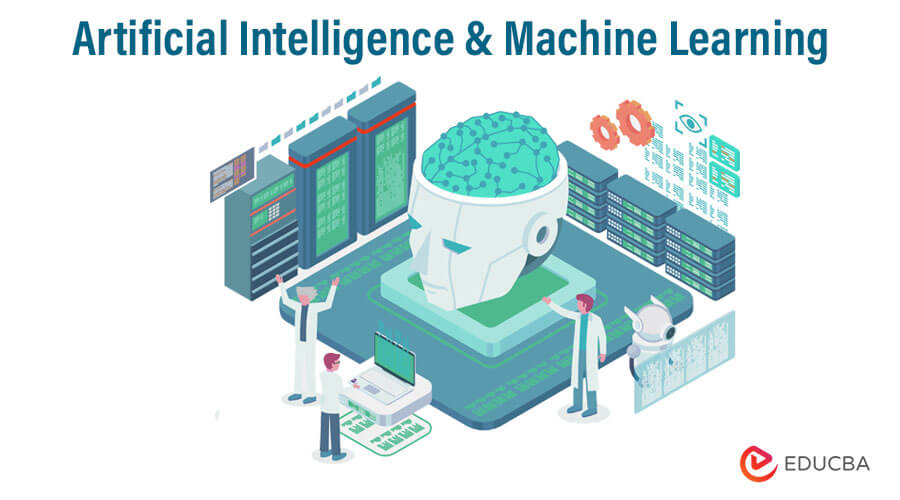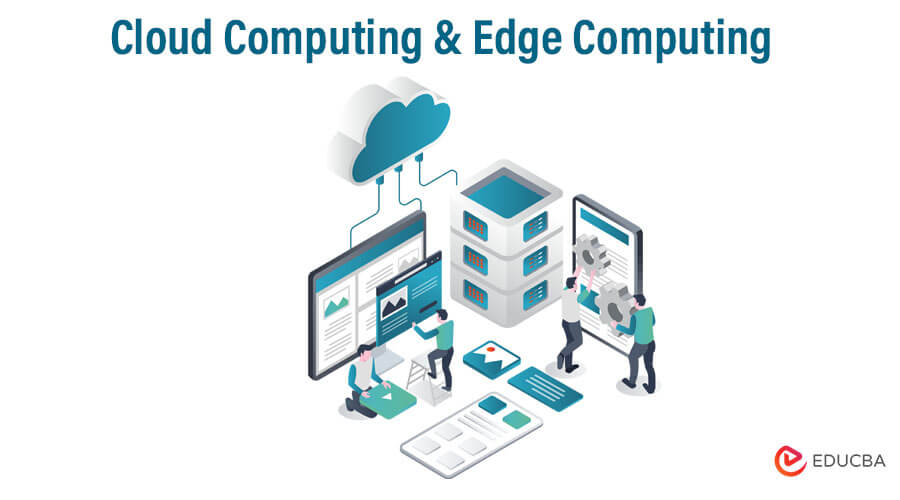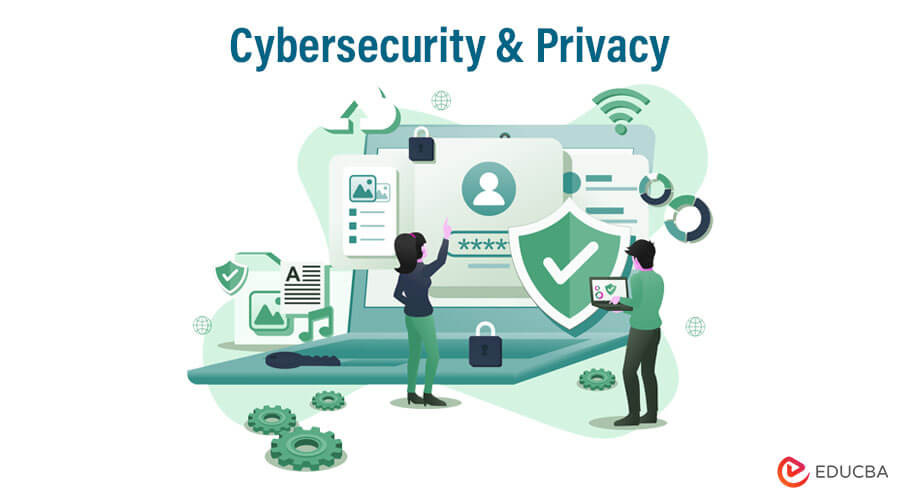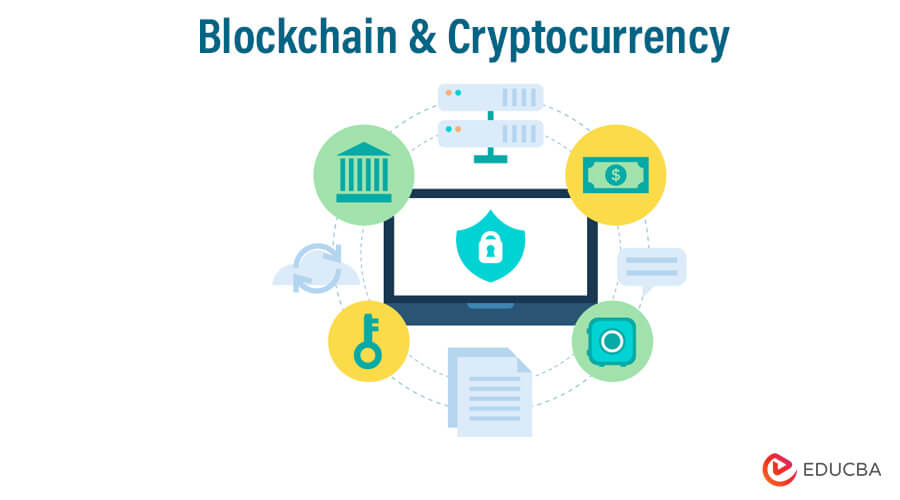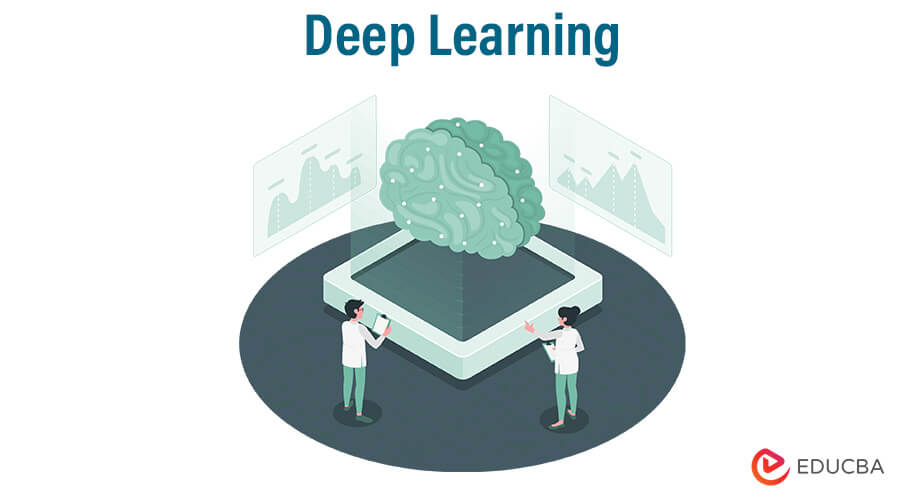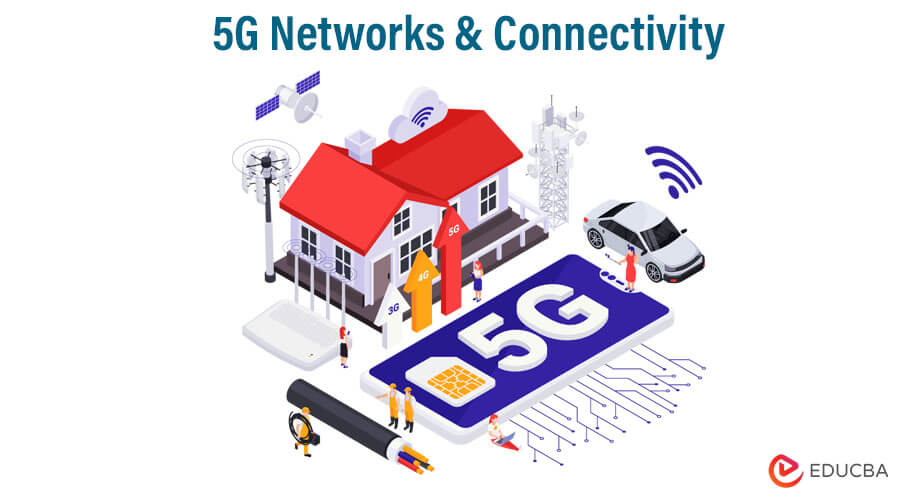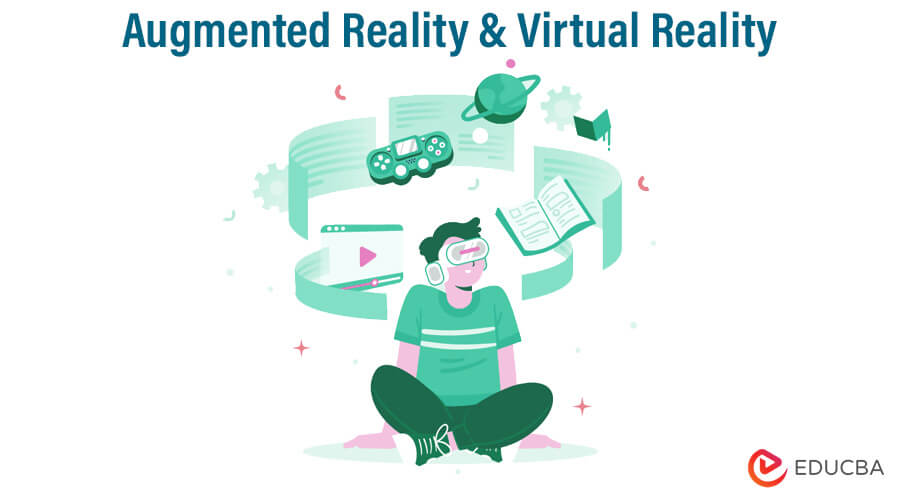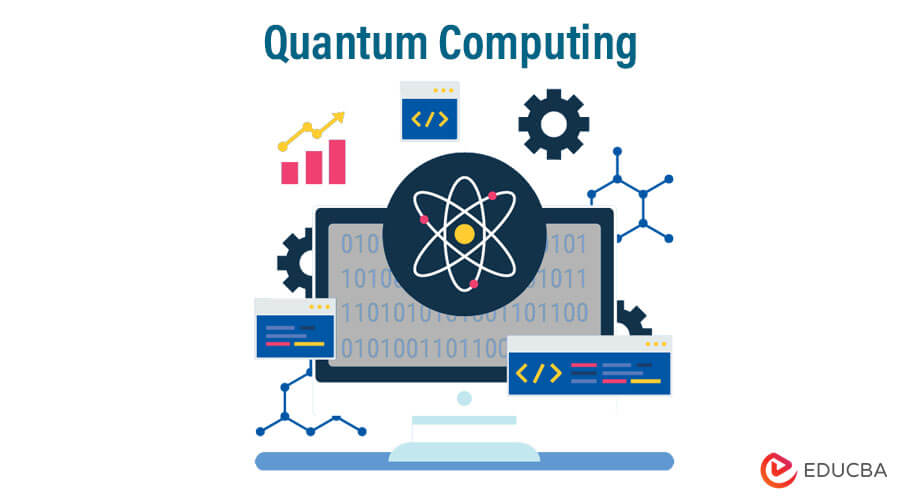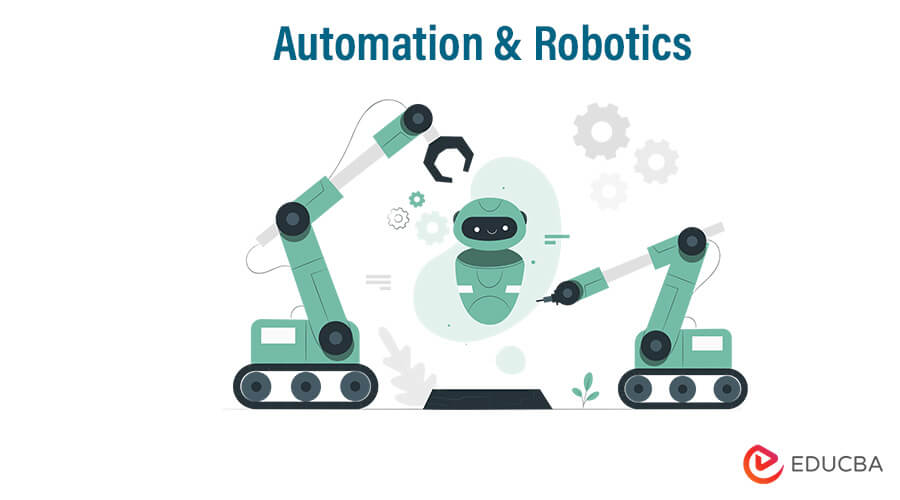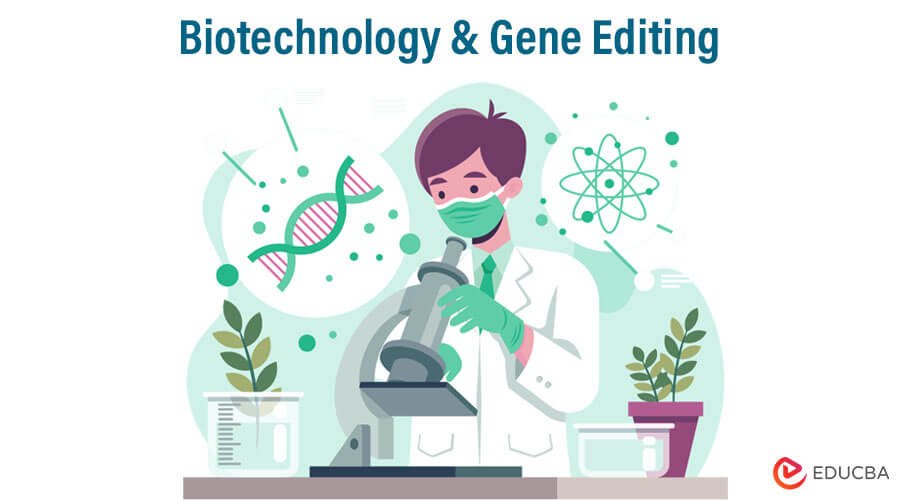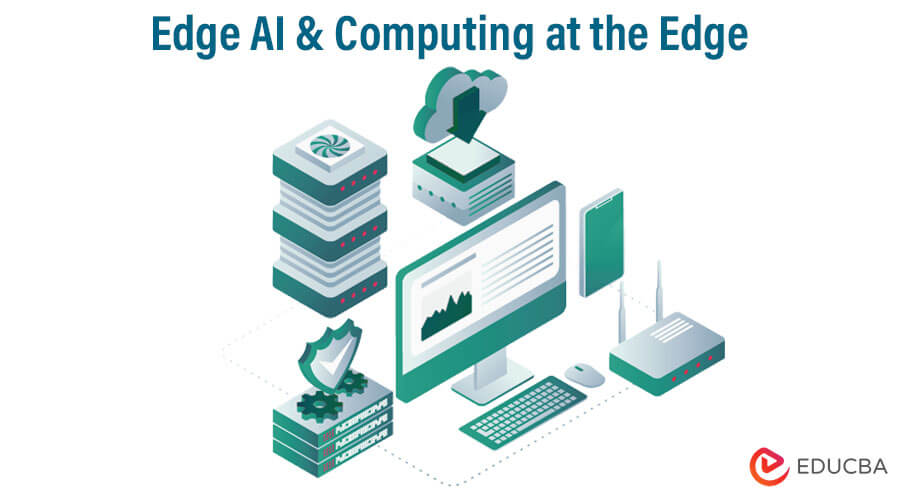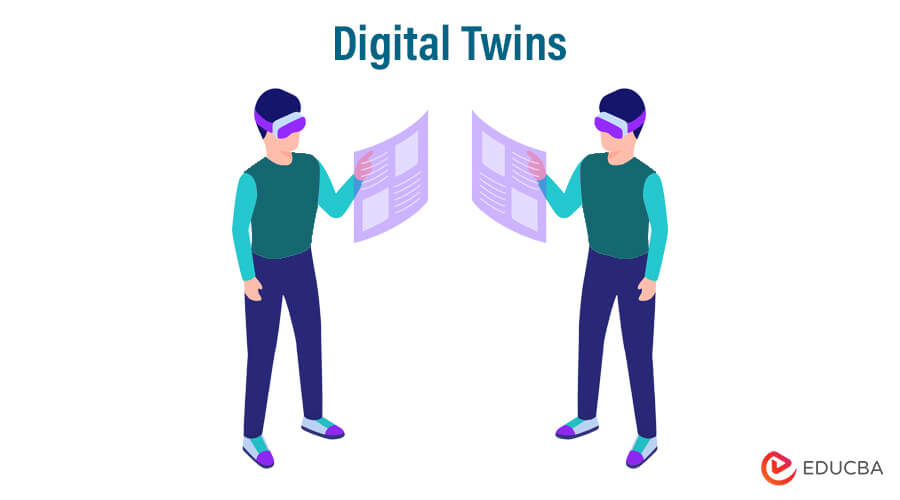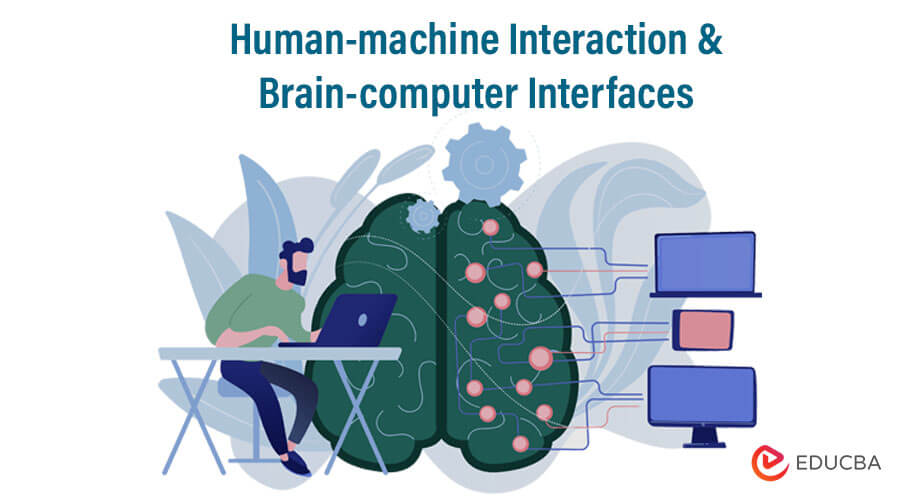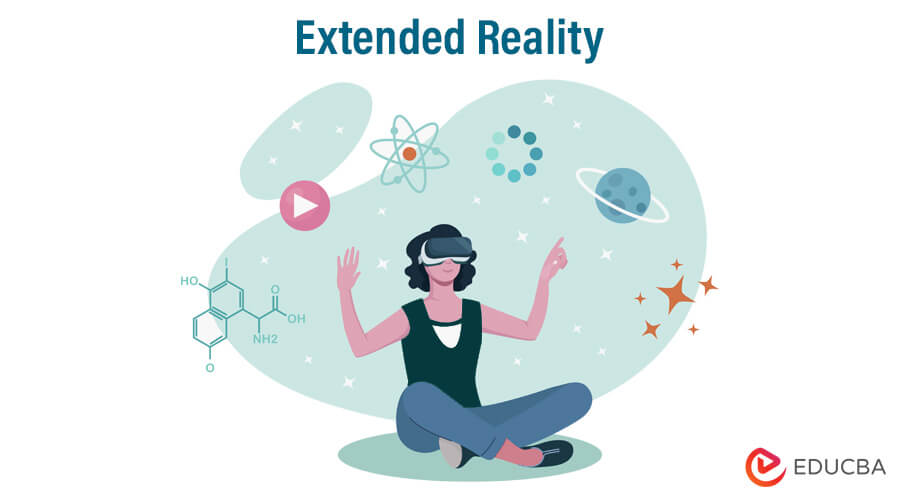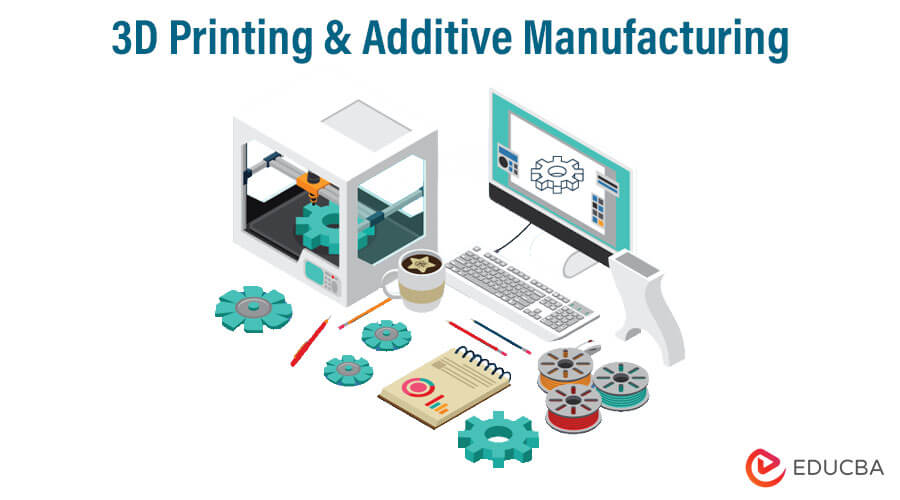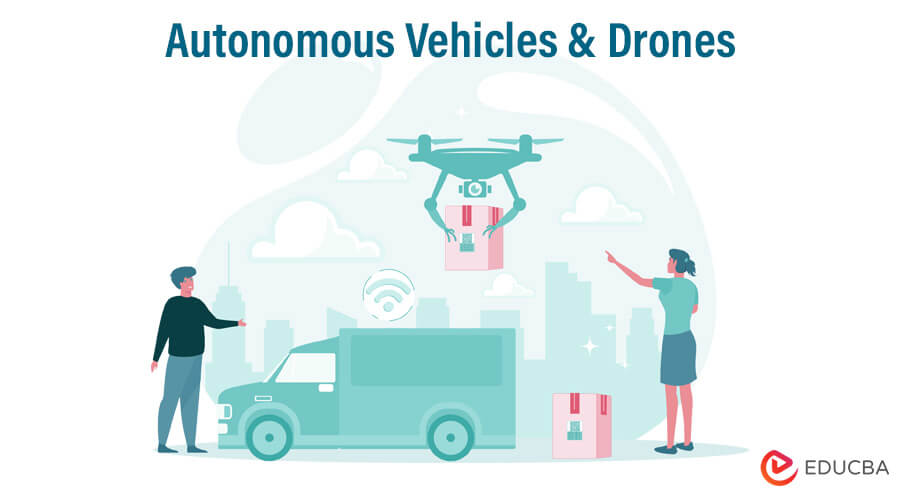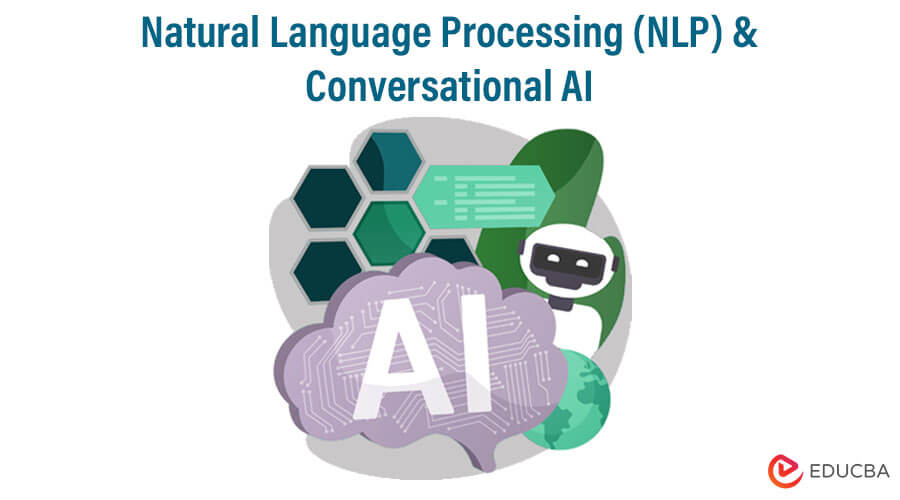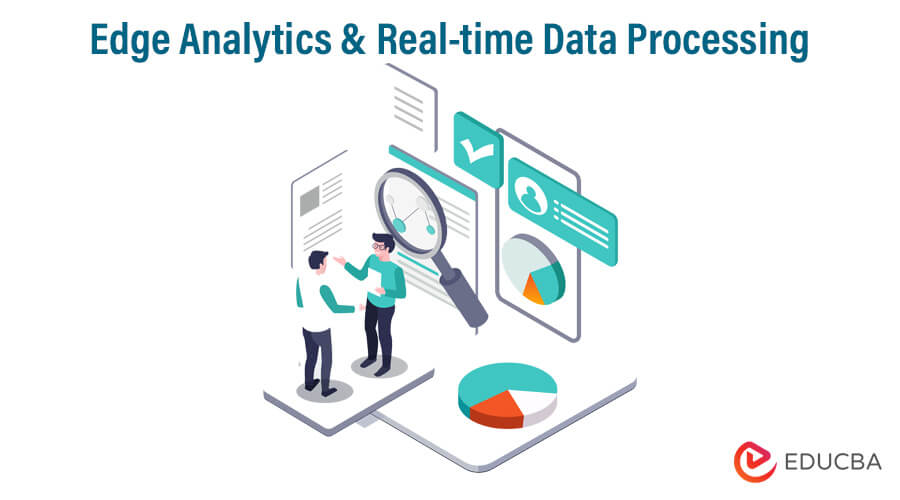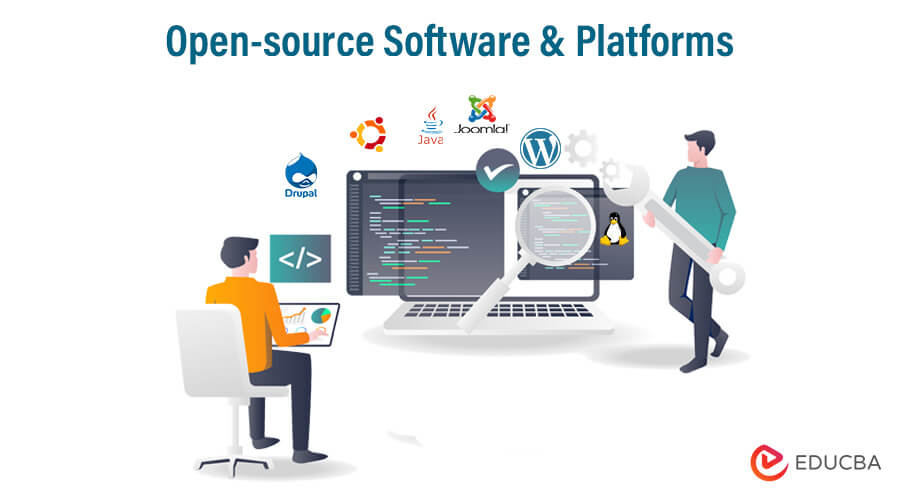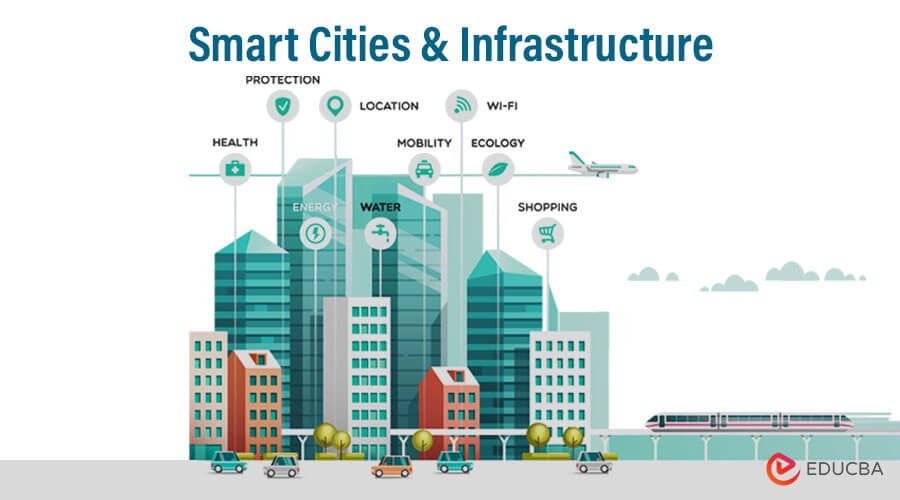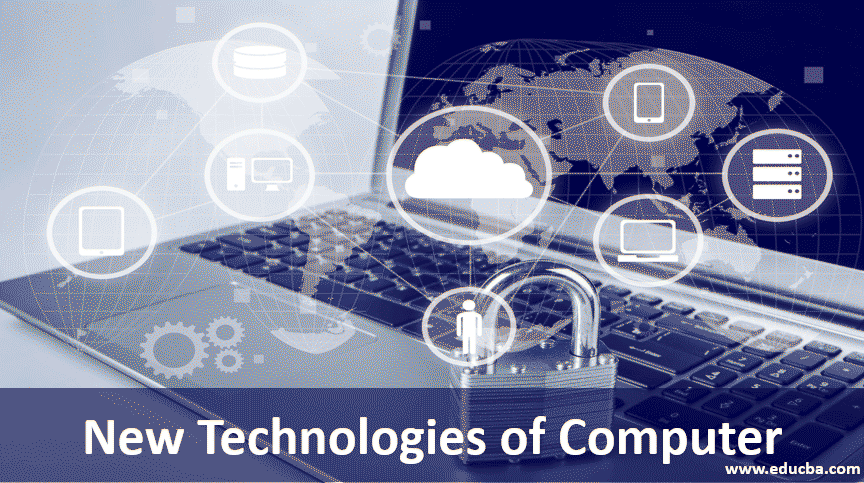
Introduction to New Technologies of Computer
Technology has shaped our world for centuries, and technological advancements have grown exponentially in recent years. It has completely changed how we live, work, and communicate, from smartphones to self-driving cars. As we enter a new era, several significant technological trends will dominate the market. These trends have a significant impact on our economy and society in addition to altering how we live and work. They influence the world’s future, from blockchain and cryptocurrency to Artificial Intelligence and Machine Learning. This blog post will examine the top 24 New Technologies of Computer trends transforming our modern lifestyle.
Key Takeaways
- Stay informed about the latest technology trends and advancements.
- Provides insights into how these trends can impact various industries and businesses.
- Highlights the potential benefits of these trends.
- Offer opportunities for businesses to leverage these trends to gain a competitive advantage.
- Showcase the importance of continued Learning and development in the ever-evolving tech landscape.
Top 24 New Technologies of Computer
There has been a lot of technologies that have brought significant change in our daily life. Because of the invention of the computer, our life has become so much easier. So here we discuss various technologies that have kept on improving and will keep on improving.
1. Artificial Intelligence & Machine Learning
Two of the most significant technological trends are Artificial Intelligence and Machine Learning. Artificial Intelligence is the ability of systems to perform tasks that require human intelligence, like perception, reasoning, Learning, and decision-making. ML is a branch of AI that enables computers to learn using data without explicit programming.
Benefits
- Automating repetitive tasks with AI and ML can decrease time spent on them and boost productivity.
- AI-powered systems can process enormous amounts of data, giving businesses and organizations insightful information.
- Predictive models created using AI and ML assist in the real-time identification of potential issues and opportunities.
- By proffering individualized recommendations and responses, AI can enhance customer service.
- By identifying and thwarting cyber threats, AI-powered systems can improve cybersecurity.
2. Internet of Things
The IoT, or the Internet of Things, is the interconnected system of real-world objects like machines, cars, buildings, and other physical objects that have sensors, software, and network connectivity built into them. These gadgets have the capacity to gather and share data, opening up new services and applications.
Benefits
- IoT can increase productivity and efficiency in manufacturing, healthcare, and logistics.
- By proposing individualized services and recommendations, IoT can improve the customer experience.
- It can reduce costs and the environmental impact of energy use in cities and buildings.
- IoT can increase public safety by delivering real-time information and alerts in emergencies.
- It can enable pay-per-use and subscription-based services as two examples of new business models.
3. Angular Programming
Angular is a popular framework for creating dynamic single-page web apps. Google maintains Angular, which is an open-source framework with an extensive and active community of developers.
Benefits of Angular Programming:
- Rapid Development: Angular streamlines the process of developing web applications by providing a collection of pre-made components and tools that can be seamlessly incorporated into web applications. This can help developers to build applications faster and with less code.
- Cross-Platform Compatibility: With Angular, web applications can be developed for multiple platforms like desktop, mobile, and web. This cross-platform support makes it easy to deploy these applications across different devices.
- MVC Architecture: Angular follows the Model-View-Controller (MVC) architecture, which makes it easier for developers to manage complex web applications by separating the application logic, user interface, and data. This can help to improve code maintainability and scalability.
- Two-Way Data Binding: Angular has a feature called two-way data binding. This also allows any changes made on the user interface to be reflected in the data model and vice versa. Using this technique can decrease the amount of code needed to handle data and enhance the performance of your application.
- Dependency Injection: Angular supports dependency injection, which makes it easier for developers to manage dependencies between different components and services. Employing this technique is crucial in reducing the code required to manage dependencies, resulting in superior code maintenance.
- Reactive Programming: Angular supports reactive programming, enabling developers to build highly responsive and interactive web applications that handle real-time data streams. This can improve the user experience and make web applications more engaging.
4. Cloud Computing & Edge Computing
Cloud computing comes with computing services, such as servers, storage, and applications, over the Internet. On the other hand, edge computing involves processing data at or close to the network’s edge, closer to where the data generation occurs.
Benefits
- Businesses can scale up or down quickly and affordably thanks to cloud computing.
- Thanks to cloud computing, access to computing resources is attainable on demand, eradicating the need for expensive hardware and infrastructure.
- Edge computing allows for real-time data processing, diminishing latency and enhancing performance.
- By processing data more closely at the source, edge computing can increase security and lower the likelihood of data breaches.
- New applications and services, like autonomous vehicles and smart cities, can be made possible by combining cloud and edge computing.
5. Cybersecurity & Privacy
The importance of privacy and cybersecurity is growing as technology turns more pervasive in our lives. Cybersecurity constitutes the process of preventing theft, damage, and unauthorized access to computer systems and networks. Privacy entangles the protection of personal data and information.
Benefits
- Gives protection against cyber threats and data breaches.
- Cybersecurity and privacy foster adoption and innovation by fostering trust and confidence in technology.
- They enable adherence to laws and regulations, lowering the risk of fines and other consequences.
- By enabling the protection of trade secrets and intellectual property, cybersecurity and privacy lower the risk of loss and theft.
- Improving customer loyalty and brand reputation can raise profits by prioritizing cybersecurity and privacy.
6. Blockchain & Cryptocurrency
Blockchain is a distributed digital ledger that tracks transactions among many systems. Digital or virtual currency that operates outside of a central authority or bank and uses cryptography for security includes cryptocurrencies like Bitcoin and Ethereum.
Benefits
- Blockchain delivers a transparent and secure way to record transactions, lowering the chance of forgery and mistakes.
- It can facilitate new business models like decentralized marketplaces and peer-to-peer transactions.
- Supply chain management made secure and effective by blockchain can lower costs and expand transparency.
- To enable financial inclusion for underserved populations, cryptocurrency can substitute traditional banking.
- Cryptocurrency can act as a stable value store and a hedge against currency fluctuations and inflation.
7. Deep Learning
Deep Learning is unequivocally categorized as a type of machine learning. It involves constructing artificial neural networks capable of learning from massive amounts of data. Various applications such as image recognition, natural language processing, and speech recognition utilize Deep Learning algorithms.
Benefits of Deep Learning:
- Improved Accuracy: Deep Learning algorithms can achieve high levels of accuracy in complex tasks like image recognition and natural language processing. Deep Learning algorithms can learn and identify data patterns that may be difficult or impossible to detect using traditional machine learning techniques.
- Automation: Deep Learning algorithms can automatically identify and categorize data without manual intervention. This can save time and resources and enable organizations to handle and evaluate vast quantities of data more quickly and efficiently.
- Scalability: Deep Learning algorithms are highly scalable, meaning they can be applied to large datasets and manage a wide range of data types and formats. This makes Deep Learning well-suited for applications like image and speech recognition; processing large amounts of data with speed and accuracy is crucial.
- Real-Time Processing: Deep Learning algorithms can process data in real-time, making them well-suited for applications like speech recognition and autonomous vehicles. This enables organizations to make decisions and take action quickly and efficiently based on real-time data.
- Personalization: Deep Learning algorithms can create personalized products and services. E-commerce sites can recommend products based on the user’s preferences through these algorithms. Healthcare providers can analyze patients’ medical data to offer personalized recommendations.
- Innovation: Experts in Deep Learning are continuously developing new algorithms and techniques, constantly evolving the field. This enables organizations to stay at the forefront of innovation and take advantage of new opportunities and emerging trends.
8. 5G Networks & Connectivity
5G, the 5th generation of cellular network technology, provides greater capacity, lower latency, and faster speeds than previous generations. They offer unprecedented rates and reliability, enabling advanced technologies like autonomous cars and remote surgeries. By 2025, 5G networks are expected to reach 1.2 billion connections globally, generating over $1.1 trillion in revenue. With 5G, we are entering an era of seamless connectivity that will change how we live and work.
Benefits
- New services and applications, like autonomous vehicles and virtual reality, will be rendered by 5G.
- Real-time collaboration and communication originate from 5G, augmenting output and efficacy.
- By enabling remote diagnosis and treatment, 5G can enhance healthcare.
- 5G can improve education by enabling remote Learning and virtual classrooms.
- It can potentially improve public safety by enabling real-time communication and response.
9. Augmented Reality & Virtual Reality
Augmented Reality and Virtual Reality are immersive technologies that offer exciting possibilities in gaming, education, and entertainment. AR overlays digital data in the real world, while VR creates a completely immersive environment. These technologies are rapidly evolving and are set to change how we experience the world.
Benefits
- AR and VR can enhance training and education by offering immersive and realistic simulations.
- AR and VR can improve customer experiences by providing virtual product demonstrations and interactive shopping experiences.
- Immersive gaming and virtual concerts are two examples of the new forms of entertainment that AR and VR can facilitate.
- AR and VR can help with design and visualization by providing 3D models and simulations.
- By allowing remote teams to collaborate in virtual settings, AR and VR may boost collaboration.
10. Quantum Computing
Quantum computing is a game-changing technology that promises to solve problems that classical computers can’t handle. It uses quantum mechanics to perform calculations that are impossible for classical computers. Quantum computing resides in its infancy, but it has the potential to transform industries from finance to drug discovery.
Benefits
- Optimizing logistics and supply chain management is one example of a complex problem that quantum computing can resolve that is intractable for classical computing.
- Applications like quantum simulation and quantum cryptography are possible through quantum computing.
- By simulating the characteristics and interactions of new materials and drugs, quantum computing can expedite their development.
- Enables quicker and more effective training and prediction, improving ML and AI.
- By making encryption and decryption faster and more secure, quantum computing could improve cybersecurity.
11. Automation & Robotics
Automation and robotics are transforming industries by improving efficiency and reducing costs. Robots help perform tasks humans once did, freeing workers to concentrate on more complex tasks. As automation technology improves, we will see more industries adopt this technology, leading to a more productive and efficient economy.
Benefits
- Robotics and automation could boost productivity and efficiency by eliminating the need for manual labor.
- They may upgrade safety by handling hazardous tasks.
- New applications, like autonomous vehicles and drones, are supported.
- By minimizing human error, they can elevate consistency and quality.
- Established and enhanced customer service using automation and robotics for round-the-clock assistance and customized experiences.
12. Biotechnology & Gene Editing
Biotechnology and gene editing are reshaping healthcare approaches. Gene editing allows us to modify DNA to treat genetic disorders, while biotechnology is revolutionizing how we produce medicines and vaccines. These technologies are unlocking new medical possibilities and can remake healthcare.
Benefits
- By making personalized medicine and gene therapy possible, biotechnology and gene editing can enhance healthcare.
- Improved agriculture by creating crops that are more pest and disease resistant.
- It helps develop new products and materials like bioplastics and biofuels.
- By lowering waste and pollution, gene editing and biotechnology can benefit the environment.
- Biotechnology and gene editing can enrich food security by enhancing crop yields and decreasing food waste.
13. DevOps
DevOps is a methodology that unites software development with IT operations to help companies provide software products and services more quickly, consistently, and effectively. The software industry embraces DevOps, which emphasizes continuous delivery, automation, and collaboration.
Benefits of DevOps:
- Faster Time-to-Market: DevOps enables organizations to deliver software products and services faster by breaking down silos between development and operations teams. This results in a more streamlined and efficient development process that can help organizations respond more quickly to changing market conditions.
- Improved Quality: DevOps emphasizes automated testing and continuous integration, which helps organizations identify and address software defects early in development. This can improve the quality of software products and services and reduce the risk of costly errors or downtime.
- Increased Efficiency: DevOps automates many of the routine tasks involved in software development and deployment, which can free up developers and operations teams to focus on more strategic activities. Increasing productivity and efficiency while reducing the risk of errors or delays can be achieved with this approach.
- Better Collaboration: DevOps emphasizes collaboration between development and operations teams, which can improve communication, reduce friction, and promote a culture of continuous improvement. This can help organizations to work more effectively as a team and achieve better results.
- Improved Security: DevOps includes security as a key component of the software development lifecycle. By integrating security practices into the development process, organizations can reduce the risk of vulnerabilities and ensure that their software products and services are secure.
- Scalability: By utilizing automation and cloud-based infrastructure, DevOps empowers organizations to expand their software products and services efficiently. This can help organizations to meet growing demands without sacrificing performance or reliability.
14. Edge AI & Computing at the Edge
Edge AI is a new technology that allows data processing at the network’s edge, reducing latency and improving response times. This technology is employed in applications like autonomous vehicles and IoT devices. With edge AI, we are entering a new world of computing that will be faster, more efficient, and more reliable.
Benefits
- They facilitate quicker and more effective data processing and enrich real-time decision-making.
- It increases security and privacy by minimizing the need to send sensitive data to centralized servers.
- Edge AI endorses scalability by distributing computing power and lowering the burden on centralized servers.
- They enable new applications like autonomous vehicles and drones that need real-time processing and decision-making.
- Reduces data transfer and storage needs, fosters efficiency, and lowers costs.
15. Digital Twins
Digital twins are virtual clones of physical systems or objects, allowing simulation and analysis. They are used in manufacturing and construction industries to optimize performance and reduce costs. Digital twins are ready to revolutionize, designing and maintaining complex systems soon!
Benefits
- Digital twins can help with asset management and maintenance by allowing for real-time monitoring and prediction of performance and maintenance requirements.
- It improves design and optimization by simulating the performance of assets or systems before they are built or deployed.
- Through the simulation of risky situations and the early detection of potential risks, digital twins promise safety.
- By maximizing the use of resources and reducing downtime, digital twins can elevate productivity.
- Digital twins can stimulate new business models, such as predictive maintenance and performance-based contracts.
16. Human-machine Interaction & Brain-computer Interfaces
Human-machine interaction and brain-computer interfaces open new possibilities for people with disabilities. These technologies allow people to control computers and other devices with their thoughts, offering a new level of independence. As these technologies improve, they become more mainstream, leading to a contemporary dimension of human-computer interaction.
Benefits
- Human-machine interaction and brain-computer interfaces advocate new forms of communication and control, such as thought-based communication and the management of prosthetic devices.
- By facilitating more accurate neurological disorder diagnosis and treatment, this technology has the potential to advance healthcare.
- It may contribute to education by opening up new interaction and learning avenues.
- These interfaces boost productivity and efficiency by providing more natural and intuitive interfaces.
- Brain-computer interfaces enable novel applications like brain-controlled machines and vehicles.
17. Extended Reality
Extended Reality(XR) comprises Augmented Reality, Virtual Reality, and Mixed Reality (MR). These technologies are used in gaming, education, and entertainment to create immersive experiences. XR has the potential to transform learning, working, and interacting with the world. XR in education can revolutionize how students learn by providing immersive, interactive experiences that enhance understanding and retention of complex subjects.
Benefits
- XR uplifts training and education by offering realistic and immersive simulations.
- By providing virtual product demonstrations and interactive shopping experiences, XR improves the customer experience.
- New entertainment mediums like immersive gaming and virtual concerts emerge through XR.
- 3D models and simulations via XR constituted empowering design and visualization.
- Allows remote teams to collaborate virtually.
18. 3D Printing & Additive Manufacturing
3D printing and additive manufacturing are renewing manufacturing by allowing for the creation of complex objects with high precision. These technologies are used in the aerospace, healthcare, and automotive industries to reduce costs and improve efficiency. As the technology improves, we may see more enterprises adopt this technology.
Benefits
- Rapid prototyping and customization made possible by 3D printing and additive manufacturing can cut costs and lead times.
- Complex geometries and lightweight structures are examples of new types of design and manufacturing 3D printing and additive manufacturing supports.
- Distributed manufacturing by 3D printing and additive manufacturing eliminates the need for centralized factories and minimizes transportation costs.
- Reduce waste and enhance sustainability by using only the necessary amount of material and reducing the need for excess inventory.
- Personalized products and new applications like 3D printing and additive manufacturing are feasible.
19. Autonomous Vehicles & Drones
Autonomous vehicles and drones are overhauling transportation by improving safety and reducing costs. Self-driving cars are being tested in cities worldwide, while drones are for everything from package delivery to search and rescue missions. These technologies will alter how we move goods and people.
Benefits
- Drones and autonomous vehicles can increase safety by lowering the possibility of human error and facilitating real-time monitoring and response.
- Autonomous vehicles and drones can augment efficiency and cut costs by optimizing routes, reducing idle time, and using less fuel.
- Drones and autonomous vehicles promote new modes of delivery and transportation, such as last-mile delivery and transport in places with poor infrastructure.
- Interprets traffic flow and reduces the number of vehicles on the road, autonomous vehicles and drones, thereby easing traffic congestion and improving air quality.
- Drones and autonomous vehicles allow new uses like search and rescue and environmental monitoring.
20. Natural Language Processing (NLP) & Conversational AI
Natural Language Processing and conversational AI are elevating interaction with computers. These technologies allow computers to understand and respond to human language, making it possible to build chatbots and virtual assistants. As these technologies improve, we may see more industries adopt them in the near future.
Benefits
- Through the facilitation of natural and intuitive interactions with chatbots and virtual assistants, NLP and conversational AI can enhance customer service.
- People with disabilities can employ voice-based interfaces thanks to NLP and conversational AI, which can increase accessibility.
- NLP and conversational AI can boost productivity by enabling voice-based device and application control.
- Personalized recommendations and voice-based search are just two examples of the new applications that NLP and conversational AI shall generate.
- NLP and conversational AI can improve healthcare by enabling natural language interactions with medical devices and systems.
21. Edge Analytics & Real-time Data Processing
Edge analytics and real-time data processing allow for data processing at the network’s edge, reducing latency and improving response times. This technology is leading industries like healthcare, finance, and manufacturing to analyze data in real time, making it possible to detect and address issues before they become problems.
Benefits
- Edge analytics and real-time data processing can increase operational effectiveness by facilitating real-time monitoring and decision-making.
- Through the facilitation of personalized and in-the-moment interactions, edge analytics and real-time data processing can enhance customer experiences.
- It can offer stringent safety measures by enabling in-the-moment monitoring and reaction to potential risks.
- Smart homes and autonomous vehicles are just two examples of the new automation and control they support.
- New business models, such as performance-based contracts and predictive maintenance, are viable using edge analytics and real-time data processing.
22. Open-source Software & Platforms
Open-source software and platforms are mutating software and infrastructure development. These technologies allow for collaboration and innovation, making it possible to build powerful tools and applications at a lower cost. As open-source technology becomes more popular, we may see more industries adopt this technology, leading to a more collaborative and efficient economy.
Benefits
- Through the ability to reuse and customize existing code and platforms, open-source software and platforms can lower costs and increase efficiency.
- Open-source platforms and software can enhance innovation by fostering collaboration and resource sharing.
- Peer review and community-driven development and testing are made possible by open-source software and platforms, which can enhance security.
- Open-source platforms and software, like open-source software as a service (SaaS), can facilitate new business models.
23. Smart Cities & Infrastructure
Smart cities and infrastructure use technology to optimize city services and increase the quality of life for residents. Sensors and data are used in “smart cities” to control traffic, save energy, and improve public safety. As more cities embrace smart technologies, we may see a new generation of urban planning that is more sustainable, efficient, and livable.
Benefits
- Smart cities and infrastructure can improve efficiency and reduce costs by optimizing the use of resources, such as energy and water.
- Real-time monitoring and response to potential risks are made possible by smart infrastructure and cities, which can increase safety and security.
- Real-time traffic optimization and monitoring by smart infrastructure and cities can increase mobility.
- Smart infrastructure and cities can increase sustainability by promoting renewable energy and lowering carbon emissions.
- Smart cities and infrastructure boost citizen engagement and participation by enabling real-time feedback and communication.
24. Big Data
Big data is common among companies to gather and scrutinize vast amounts of organized and unorganized information. This enables them to obtain valuable knowledge and reach well-informed conclusions. With the rise of digital devices and online services, big data has become an important resource for businesses, governments, and individuals.
Benefits of Big Data:
- Improved Decision-Making: Big data provides valuable insights to help organizations make more informed decisions. Businesses can detect patterns and trends that may be hard to identify by analyzing large datasets. Industries such as finance, healthcare, and marketing can benefit significantly from this.
- Increased Efficiency: Big data can help organizations improve operational efficiency by automating processes and reducing manual labor. For example, businesses can use big data analytics to optimize their supply chain and logistics operations, reducing costs and improving delivery times.
- Personalization: Organizations can use big data to personalize their products and services to meet the unique needs of individual customers. Analyzing customer data helps businesses tailor their offerings to meet customer needs better.
- Innovation: To thrive in the current market, businesses must analyze large data sets to understand consumer behavior and market trends. This helps them create new products, identify growth opportunities, and stay innovative.
- Risk Management: Big data can help organizations mitigate risks by identifying potential threats and vulnerabilities. For example, businesses can use big data analytics to detect fraudulent activities and prevent financial losses.
- Competitive Advantage: Organizations can gain a competitive edge through big data analysis, which helps them make informed decisions, increase efficiency, and accelerate innovation ahead of the competition.
Conclusion- New Technologies of Computer
Technology is advancing rapidly, which could significantly change how people live and interact with the world. This article outlines the 20 most significant technological trends, highlighting groundbreaking advancements.
Each technology trend has distinct advantages and applications, but they aim to make our lives better, convenient and address complex problems. Considering these trends’ ethical, social, and economic ramifications is crucial as they develop and mature. We can create a more sustainable, just, and prosperous future for everyone by utilizing these technologies strategically!
For more tech-related articles, check out our latest works!
FAQs for New Technologies of Computer
1. What distinguishes Machine Learning from Artificial Intelligence?
Answer: Artificial Intelligence refers to a broader area of computer science that aims to build intelligent machines capable of executing tasks needing human intelligence. Applying algorithms and statistical models in Machine Learning, a branch of AI, enables computers to learn from data and enhance performance without being explicitly programmed.
2. What makes cybersecurity crucial?
Answer: Cybersecurity is crucial to prevent unauthorized access, theft, or damage to sensitive data and systems. It is vital to protect data integrity, confidentiality, and privacy and avoid cyberattacks and other crimes.
3. Why opt for cloud computing?
Answer: There are several reasons to opt for cloud computing, including:
- Scalability
- Cost-effectiveness
- Accessibility
- Security
- Reliability
4. What advantages do blockchain technology and cryptocurrencies offer?
Answer: Through blockchain and cryptocurrency transactions, there is no need for intermediaries or centralized authorities, thus ensuring security and transparency. Also, this technology supports digital asset creation and decentralized applications while improving financial transaction efficiency and reducing costs.
Recommended Articles
We hope that this EDUCBA information on “New Technologies of Computer” was beneficial to you. You can view EDUCBA’s recommended articles for more information.
